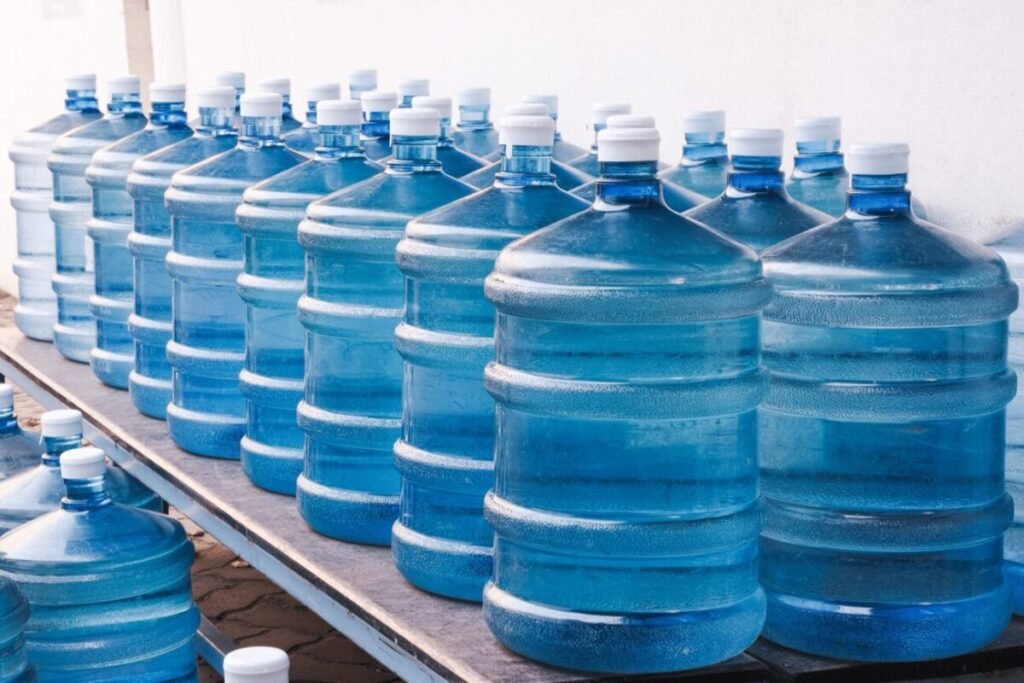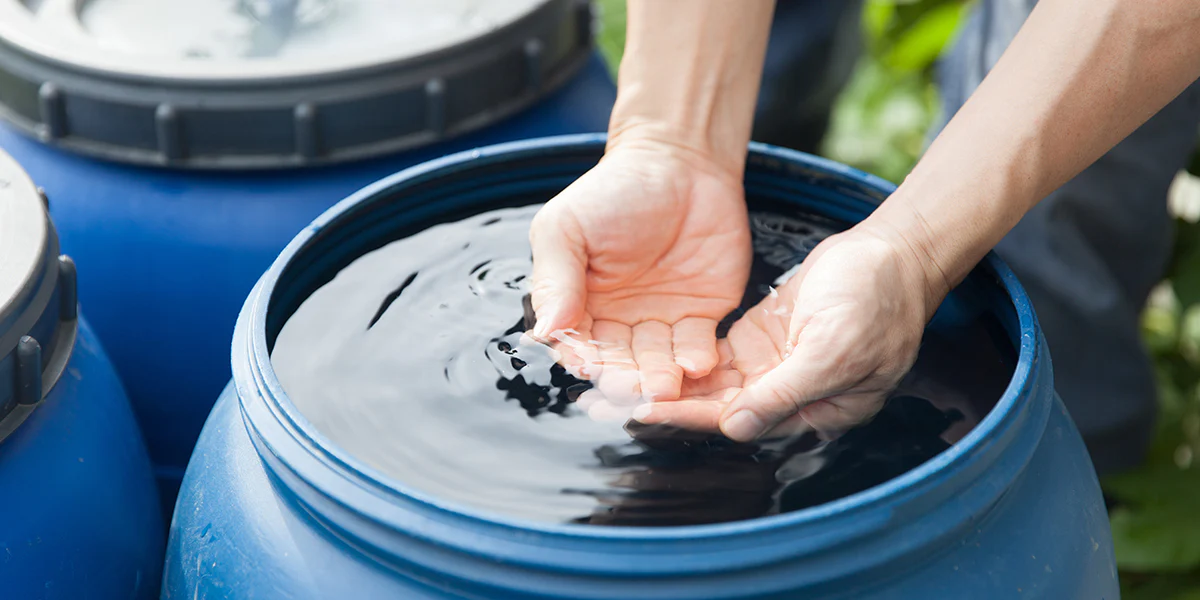Water is the cornerstone of survival. Without it, you cannot last more than a few days. In an emergency or disaster scenario, having a reliable source of clean water storage for preppers can mean the difference between life and death.
This comprehensive guide will unveil seven crucial secrets that every prepper must know to ensure their survival and maintain an efficient water storage system at home.
7 Water Storage Secrets for Survival
- Secret 1 – Plan your water storage strategy based on your household’s needs and desired stockpile duration.
- Secret 2 – Choose the right water storage containers, such as food-grade plastic, stainless steel, or rigid bladders.
- Secret 3 – Implement purification protocols to keep your water supply safe and free from contamination.
- Secret 4 – Regularly rotate your water storage to maintain freshness and prevent stagnation.
- Secret 5 – Store your water containers in the ideal location: cool, dark, dry, and protected from pests.
- Secret 6 – Explore water collection hacks, including rainwater harvesting and natural water sources.
- Secret 7 – Implement cost-effective water storage solutions, such as repurposing food-grade containers or bulk purchases.
By the end of this article, you’ll have a comprehensive understanding of how to create an efficient and reliable water storage system for your home, ensuring you and your family have access to clean, safe water in any emergency situation.
Don’t Wing It: Plan Your Water Storage Strategy

The first secret to effective water storage for preppers is meticulous planning. Winging it or relying on luck is a surefire recipe for disaster.
- Assess your household’s daily water needs for drinking, cooking, and hygiene.
- Calculate how much water you’ll need for your desired stockpile duration (e.g., 2 weeks, 1 month, or longer).
- Factor in potential water sources during an emergency, such as rainwater or nearby natural sources.
| Minimum Water Needs per Person |
|---|
| Survival (drinking only) |
| Basic hygiene |
| Cooking and cleaning |
For more information on food and water storage essentials, check out our comprehensive guide.
The Container Conundrum: Finding the Perfect Vessel
The second secret lies in choosing the right water storage containers. Not all containers are created equal, and the wrong choice can lead to contamination, leakage, or even health hazards.
Food-grade plastic containers
- Look for containers made of high-density polyethylene (HDPE) or polyethylene terephthalate (PET).
- Avoid containers that previously held toxic substances or chemicals.
- Check for cracks, leaks, or signs of degradation before using.
Stainless steel tanks
- Durable and rust-resistant, making them ideal for long-term storage.
- More expensive but can last for decades with proper maintenance.
- Ensure the tank is food-grade and has a tight-fitting lid.
Rigid water bricks and bladders
- Portable and space-efficient, perfect for bug-out bags or limited storage areas.
- Look for sturdy, puncture-resistant containers made of food-grade materials like collapsible water bottles.
- Check the expiration date and replace them every few years.
Purification Protocols: Keeping Your Water Supply Safe

The third secret is ensuring your water storage remains clean and safe for consumption. Even the purest water can become contaminated over time.
Boiling and chemical treatment
- Boiling water for at least one minute kills most harmful bacteria and pathogens.
- Chemical treatment with household bleach or water purification tablets is an effective backup.
Filtration systems
- Invest in a high-quality water filter or purifier to remove contaminants and improve taste.
- Look for filters that can remove bacteria, viruses, and heavy metals.
- Replace filter cartridges according to the manufacturer’s recommendations.
Rotation, Rotation, Rotation: Maintaining Freshness
The fourth secret is regularly rotating your water storage. Stagnant water can breed bacteria and become unsafe to drink over time.
- Develop a rotation schedule based on the manufacturer’s recommendations or your personal preference.
- Clearly label containers with the date they were filled.
- Use the oldest water first and replace it with fresh, treated water.
Water rotation schedule
| Container Type | Recommended Rotation |
|---|---|
| Plastic bottles | Every 6 months |
| Rigid containers | Every 1-2 years |
| Stainless steel | Every 5 years |
Monitoring for contamination
- Regularly inspect containers for signs of leaks, cracks, or discoloration.
- Smell and visually inspect the water for any off-odors or cloudiness, which could indicate contamination.
- If in doubt, discard the water and replace it with fresh, treated water.
For more guidance on emergency food rotation and maintaining freshness, check out our dedicated article.
Location, Location, Location: Where to Store Your Water
The fifth secret is choosing the right storage location for your water storage containers. The environment can significantly impact the quality and safety of your water supply.
Cool, dark, and dry environments
- Store water in a cool, dark area away from direct sunlight and heat sources.
- Basements, closets, or climate-controlled rooms are ideal locations.
- Avoid damp or humid areas that can promote mold growth and contamination.
Protecting from pests and contaminants
- Secure containers to prevent access by rodents, insects, or other pests.
- Store containers off the ground and away from potential sources of contamination.
- Consider using airtight, pest-proof containers or storage areas.
Water Collection Hacks: Tapping Into Nature’s Bounty
The sixth secret is being prepared to collect and store water from natural sources during an emergency. This can supplement or extend your existing water storage.
Rainwater harvesting
- Set up rain barrels or catchment systems to collect rainwater from roofs or gutters.
- Treat and filter collected rainwater before storing or consuming it.
Natural water sources
- Identify nearby lakes, streams, or rivers that could serve as potential water sources.
- Invest in portable water filters or purification systems for treating collected water.
- Exercise caution and treat all natural water sources as potentially contaminated.
For more information on rainwater harvesting, check out our dedicated guides.
Penny-Pinching Prepper: Cost-Effective Water Storage Solutions
The seventh secret is finding affordable and cost-effective water storage solutions that won’t break the bank.
Repurposing food-grade containers
- Reuse clean, food-grade containers like juice jugs or soda bottles for short-term water storage.
- Thoroughly clean and sanitize containers before filling with treated water.
Bulk water purchases
- Consider purchasing water in bulk from retailers or water delivery services.
- Look for sales or discounts on bottled water or food-grade water containers.
- Rotate and replace bulk water according to the manufacturer’s recommendations.
For more tips on building an emergency food supply on a budget, check out our article.
The Ultimate Water Storage Checklist
To ensure you’re fully prepared, here’s a checklist of essential water storage supplies and equipment:
- Food-grade water containers (plastic, stainless steel, or rigid bladders)
- Water treatment supplies (filters, purifiers, chemicals)
- Siphon pump or siphon hose for transferring water
- Water testing kit to monitor quality
- Backup storage containers or water bricks for emergencies
- Rainwater catchment system or portable water filters
- Written instructions and guidelines for water storage and treatment
By following these seven water storage secrets, you’ll be well-equipped to survive any emergency or disaster scenario with a reliable and safe supply of life’s most precious resource – water.
Embrace these secrets, continually refine your approach, and take pride in knowing that you’re taking proactive steps to safeguard one of life’s most precious resources – water.
Conclusion
Preparedness is key to survival, and having a reliable water storage system is essential. By following these seven water storage secrets, you’ll be well-equipped to navigate any emergency or disaster scenario with a consistent supply of clean, safe water.
Here’s a summary of the secrets covered in this comprehensive guide:
| Secret | Description |
|---|---|
| 1. Plan Ahead | Calculate your household’s water needs and desired stockpile duration. |
| 2. Choose Wisely | Select the right water storage containers, such as food-grade plastic, stainless steel, or rigid bladders. |
| 3. Purify and Protect | Implement purification protocols and regularly monitor for contamination. |
| 4. Rotate and Refresh | Develop a rotation schedule to maintain freshness and prevent stagnation. |
| 5. Location Matters | Store water in cool, dark, dry, and pest-free environments. |
| 6. Explore Natural Sources | Collect and treat water from rainwater harvesting and natural sources. |
| 7. Be Cost-Effective | Repurpose food-grade containers or purchase water in bulk. |
Remember, water is the elixir of life, and having a reliable storage system can mean the difference between survival and peril. Stay prepared, stay vigilant, and stay hydrated!


